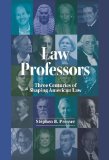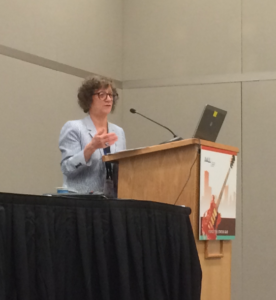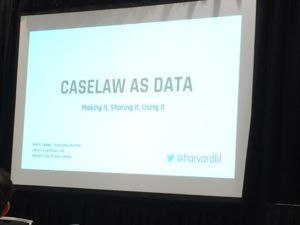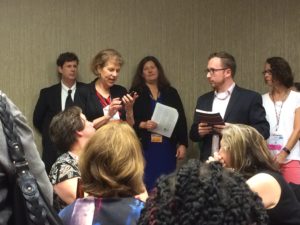 A recent article in the NY Times, New York Congregation Owns Oldest Synagogue in the U.S., 180 Miles Away, Court Rules, reports that a federal appeals court has ruled that Shearith Israel in New York actually owns the Touro Synagogue building in Newport. Shearith Israel, founded in Manhattan in 1654, is the oldest congregation. Touro Synagogue, in Newport, R.I., built in 1763, is the oldest synagogue building. Justice David H. Souter, the retired associate justice of the Supreme Court, wrote the opinion in Congregation Jeshuat Israel v. Congregation Shearith Israel for the First Circuit Court of Appeals in Boston. In it, he overturned a district-court ruling that the congregation that has worshiped for more than 130 years in the Touro Synagogue building, Jeshuat Israel, had control over the building and its objects. Now, what may be the country’s most historic synagogue building is officially owned by a group 180 miles away.
A recent article in the NY Times, New York Congregation Owns Oldest Synagogue in the U.S., 180 Miles Away, Court Rules, reports that a federal appeals court has ruled that Shearith Israel in New York actually owns the Touro Synagogue building in Newport. Shearith Israel, founded in Manhattan in 1654, is the oldest congregation. Touro Synagogue, in Newport, R.I., built in 1763, is the oldest synagogue building. Justice David H. Souter, the retired associate justice of the Supreme Court, wrote the opinion in Congregation Jeshuat Israel v. Congregation Shearith Israel for the First Circuit Court of Appeals in Boston. In it, he overturned a district-court ruling that the congregation that has worshiped for more than 130 years in the Touro Synagogue building, Jeshuat Israel, had control over the building and its objects. Now, what may be the country’s most historic synagogue building is officially owned by a group 180 miles away.
Shearith Israel was founded in the Colonial period by 23 Spanish and Portuguese Jews in what is now Lower Manhattan. Since 1897, the Orthodox congregation has met in a Tiffany-designed neo-Classical building on 70th Street and Central Park West. When Newport’s Jews faced persecution during the American Revolution, they fled the town and the synagogue building, many for New York. Without a congregation in Newport, Shearith Israel took control of the synagogue. Shearith Israel was historically Sephardic, while Jeshuat Israel was mostly Ashkenazi. Justice Souter reversed the trial judge order that sided with Jeshuat Israel. See earlier BLS Library blog post here. The three-judge panel of the 1st U.S. Circuit Court of Appeals relied on contract law and looked at the 1903 agreement and other contracts as it would in any other civil law case. Justice Souter put it delicately: “These are circumstances in which we think that the First Amendment calls for a more circumscribed consideration of evidence than the trial court’s plenary enquiry into centuries of the parties’ conduct by examining their internal documentation that had been generated without resort to the formalities of the civil law.”
Touro Synagogue holds an important place in the history of the nation’s commitment to religious liberty. In 1790, George Washington visited Touro and sent a letter to the congregation pledging America’s commitment to religious liberty. See the letter from Moses Seixas to President George Washington and the response from President Washington, both well worth the reading. Seixas was a first generation Jewish-American whose parents migrated from Lisbon, Portugal, to Newport. Seixas rose to prominence as warden of Newport’s Touro Synagogue of Congregation Jeshuat Israel.


 The Brooklyn Law School Library’s
The Brooklyn Law School Library’s 



 By now, students taking bar exams have done the hard work studying. Now it is time to perform. At this point, it is going to be difficult to memorize much more, so now is the time to focus on practice tests and the art of taking the test, the actual process, and your pace. Spend your time wisely – not cramming in more random facts you probably won’t recall anyway. Don’t forget to breathe! Take the time to meditate, so you can clear your head which will allow your thoughts to become better organized. This will serve you well in the week leading up to the bar exam. Start each morning meditating, allowing your brain to be calmed and soothed. Not only will this help in the week before the bar, studies show that people who meditate make better complex decisions. Just what you need to answer the complex bar exam questions! So, when you take the exam, and you read that question that seems to be a trusts and estates question, or wait, is it a dissolution question? Stop, breathe, and think! Allow yourself just a minute to breathe in deep, clear your mind, and breathe out. Re-read the question, and do what you are well trained to do at this point – apply the law! Do this anytime you hit a panic-point during the exam.
By now, students taking bar exams have done the hard work studying. Now it is time to perform. At this point, it is going to be difficult to memorize much more, so now is the time to focus on practice tests and the art of taking the test, the actual process, and your pace. Spend your time wisely – not cramming in more random facts you probably won’t recall anyway. Don’t forget to breathe! Take the time to meditate, so you can clear your head which will allow your thoughts to become better organized. This will serve you well in the week leading up to the bar exam. Start each morning meditating, allowing your brain to be calmed and soothed. Not only will this help in the week before the bar, studies show that people who meditate make better complex decisions. Just what you need to answer the complex bar exam questions! So, when you take the exam, and you read that question that seems to be a trusts and estates question, or wait, is it a dissolution question? Stop, breathe, and think! Allow yourself just a minute to breathe in deep, clear your mind, and breathe out. Re-read the question, and do what you are well trained to do at this point – apply the law! Do this anytime you hit a panic-point during the exam. On the day before the exam, relax. It is not the time to hit the other bar. Relax and do something enjoyable. Check out from the Brooklyn Law Library collection the e-book titled
On the day before the exam, relax. It is not the time to hit the other bar. Relax and do something enjoyable. Check out from the Brooklyn Law Library collection the e-book titled  More controversial is
More controversial is  Brooklyn Law School, during the Summer 2017 semester, has taken a first step with its
Brooklyn Law School, during the Summer 2017 semester, has taken a first step with its 
 The title that caught the attention of this reader was
The title that caught the attention of this reader was